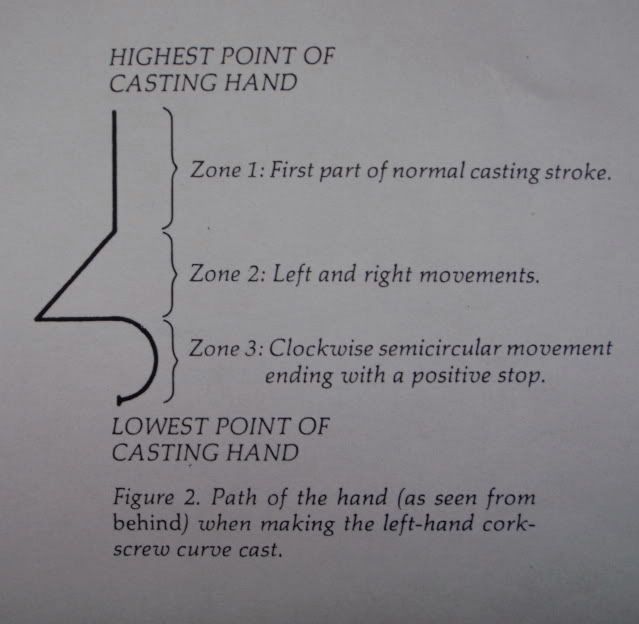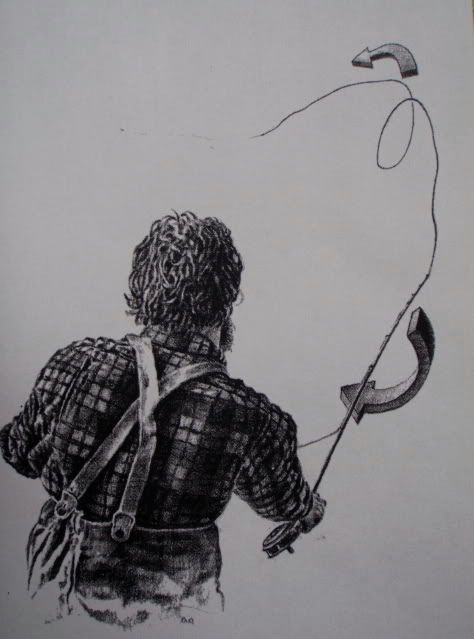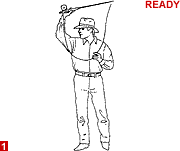Turbineblade: Take a look at this video by Peter Kutzer on "The Curve Cast".
Tuesday Tip: The Curve Cast
Pete demonstrates two ways to curve the cast around the hula hoops. The first is the overpowered cast which is why turbineblade's casts are curving. This is why he casts a tuck cast when he does it in the vertical plane.
Jackster's solution is correct in that you need to back off on the power. This fine tuning the power you need to the cast you want to make. Right now you don't have the muscle memory and "feel" needed to match the distance to the power. I comes with time. I bet you can throw a football to a spot accurately. That is because you have been throwing your whole life. Or if you play golf, hitting a chip shot to a spot. Or in my case, hitting a tennis forehand into a corner. So practice to develop that feel.
Going back to the curve cast video, the third method (at 2:25) Pete uses, is to add a hook or what he calls a "twist". A hook is when you change the path of the rod tip just before the stop. Since the fly line follow the rod tip, if the rod tip hooks to the right just before the stop, the fly line will hook to the right. Anatomically, he is pronating his hand. This is a clockwise rotation of the wrist for a right hander as you look down your arm. It is the motion you use twist the key to start your car. Because you are twisting as your rod and is moving forward just before the stop, the rod tip hooks to the left. Hence the fly line hooks to the left.
A better way to make a curve cast was published in 1980 by Bob Pelzl and Gary Borger on pg. 58 of the 1980 Early Season issue of
Fly Fisherman Magazine titled "Corkscrew Curve Cast". Now we have video so you can see Jason Borger demonstrating this cast.
Look at these two videos of Jason Borger doing the corkscrew curve cast. Because he adds the corkscrew before the stop, the curve is place in the fly line at the leader. Look at both videos - on the second one you can see the end of the fly line
curving to the left.
http://jasonborger.com/2009/02/24/corkscrew-curve-vids/
Now here is what confuses even seasoned casters.
Before the stop, Jason moves the rod tip
to the left and then in a
semicircle (corkscrew) to the right. He is producing a
two pulses, first to the left then to the right that travel down the fly line.
Here are two illustrations from the original article:
If you did not know Jason made that initial motion to the left, you would only see the final corkscrew to the right, and
you would think a rightward motion made a leftward curve.
No wonder even accomplished casters are puzzled by this cast.
What ever you do with the rod tip after the stop affects how the fly line lands; and the sooner you do it after the stop, the closer the change in fly line direction will be to the leader. Everything is related to the stop, because it is the stop that causes loop formation and transfers potential energy from the bent rod to the fly line. What happens is that
any change in direction or position of the rod tip is transmitted to the fly line and travels down the fly line following the loop as it moves from the rod tip to the end of the line and leader.
Now that you have seen the cast, imagine a rod tip motion to reposition the line after the stop. Try to visualize it in your mind and you will begin to understand what happens after the hard stop. The stop caused the rod tip to slow down. The fly line continues forward at the same speed, and its momentum carries it ahead of the slowing rod tip. Since the end of the fly line is anchored to the rod tip, this forward momentum of the trailing line causes it to flip over and form a loop which travels toward the end of the line and leader as the fly line extends itself. Whatever you do
after loop formation then
must follow the loop down the fly line. The longer you wait after the stop to move the rod tip, the further the loop has traveled down the line before the action caused by the movement of the rod tip can follow it down the line.
All the "in-the-air mends" we do rely this fact. The simplest reach mend repositions the fly line to the side of the mend,
because we "reach" or reposition the rod tip to the side of the mend.
I leave you with the way I think about curves and mends.
A simple concept is that curve casts are performed by rod tip motions before the stop, mends which may also be curves are performed by rod tip motion after the stop.
This leads me to the shadow cast as performed by Jason Borger in The River Runs Through It. We all have seen the cast. Gary and Jason designed that cast and it is composed entirely of curve casts and mends that reposition the fly line in the air.
 ..?
..? 



